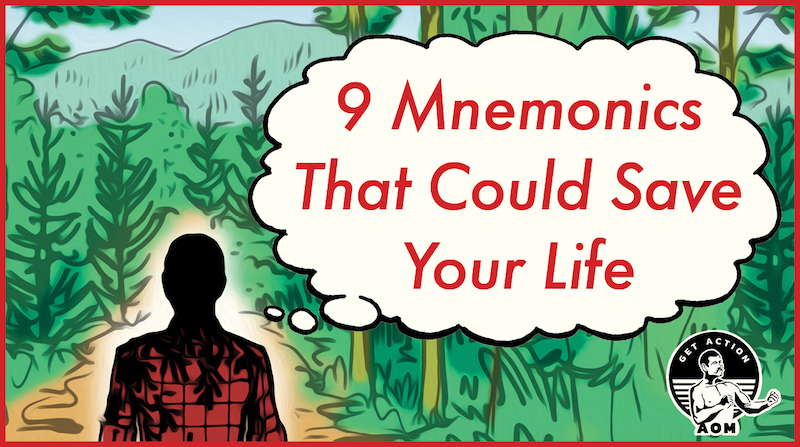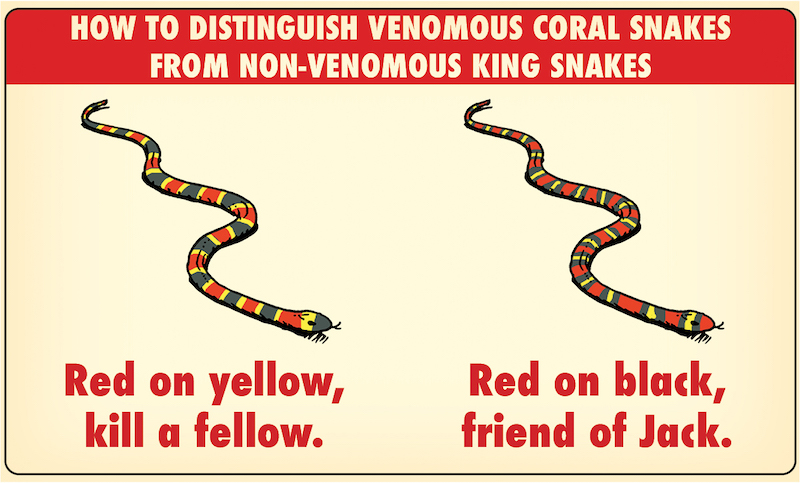
When it comes to trying to save a life — either someone else’s or your own — it can be hard to remember what to do. Not only because the breadth of survival/first aid know-how is so vast, but because it’s hard to think clearly in a threatening situation.
That’s where mnemonics — the use of rhymes, acronyms, and other techniques to more easily remember something — come in handy. For example, you likely conjure up the cardinal directions by saying “Never Eat Shredded Wheat,” remember the colors of the rainbow by thinking of that colorful fellow ROY G. BIV, and remind yourself to avoid touching poison ivy by rehearsing the old “leaves of three, let them be” admonition.
Below are 9 mnemonics related to first aid and survival that can be easily memorized now, and readily pulled out in case of emergency later:
To identify venomous snakes: Red on yellow, kill a fellow; red on black, friend of Jack

This classic rhyme is a help in differentiating venomous coral snakes from similar looking but nonvenomous king snakes. The former sport alternating black, yellow, and red bands of color in which the red and yellow stripes touch each other; a king snake has the same bands of color but in a different pattern, so that the red stripes touch the black.
It’s important to keep in mind that this mnemonic only holds true for North America; other species of coral snakes exist outside the continent with different markings. One should also keep in mind that king snakes are not exactly a “friend” in the sense that you’d want to handle them; even if nonvenomous, they can still bite, and snakebites of any kind aren’t pleasant.
To recognize if someone is having a heart attack: PULSE
Pain in the chest, jaw, neck, back, or arms Upset stomach (nausea, vomiting, indigestion) Lightheadedness (or dizziness) Shortness of breath Excessive sweating
The hour after a heart attack happens is referred to as the “golden hour,” as the sooner a victim can get medical treatment, the better the chance of mitigating the irreversible, tissue-killing damage that follows in its wake. As another popular phrase in the medical community goes, “time is muscle,” so know the signs of a heart attack well and familiarize yourself with what to do in case one occurs.
To recognize if someone if having a stroke: FAST
Face drooping Arm weakness Speech slurring Time to call 9-1-1, if you see these symptoms
Just as with a heart attack, every minute counts when someone has a stroke, and the sooner you recognize one is happening, and seek medical attention, the better the chance of survival and of preventing long-term disability.
No comments:
Post a Comment